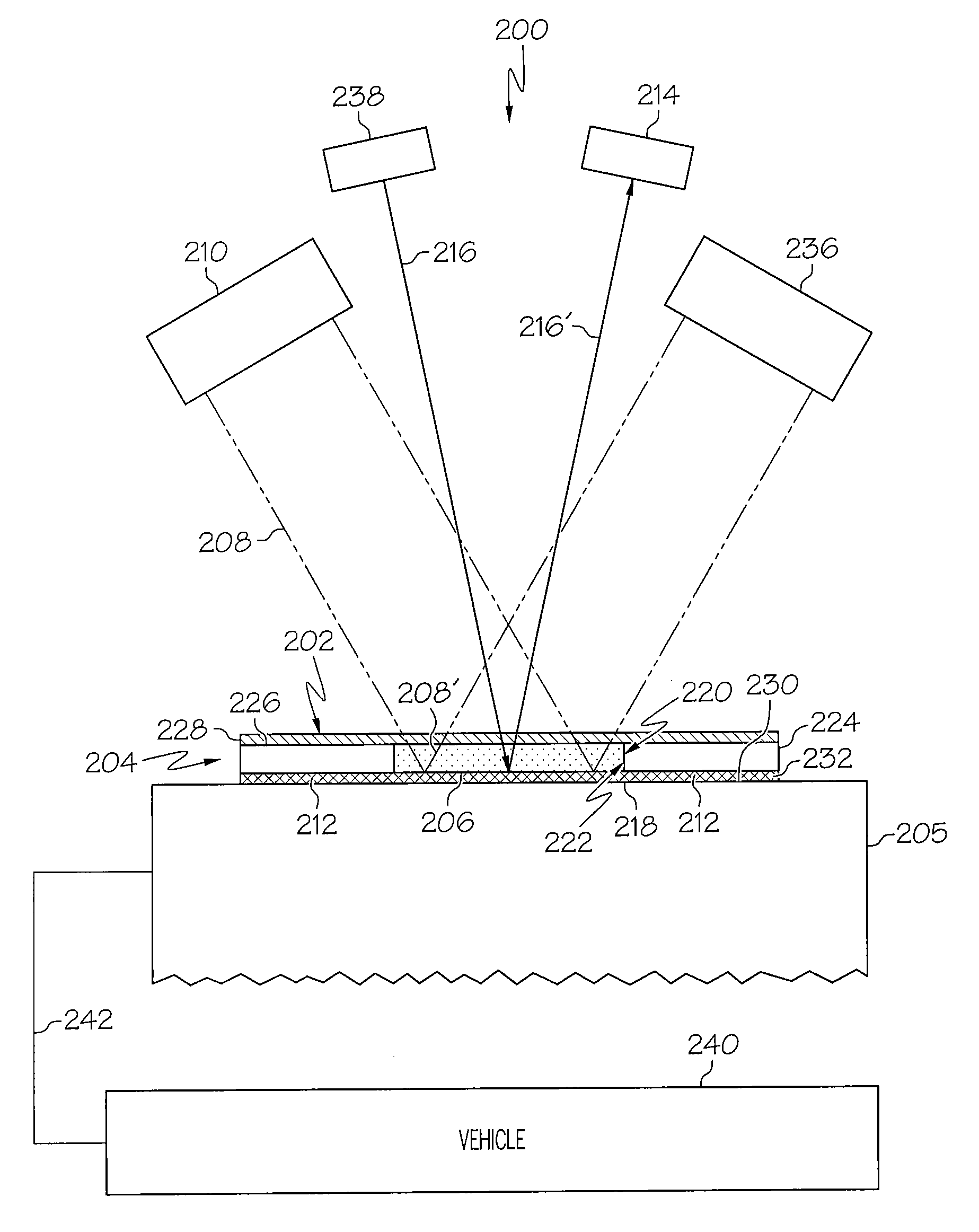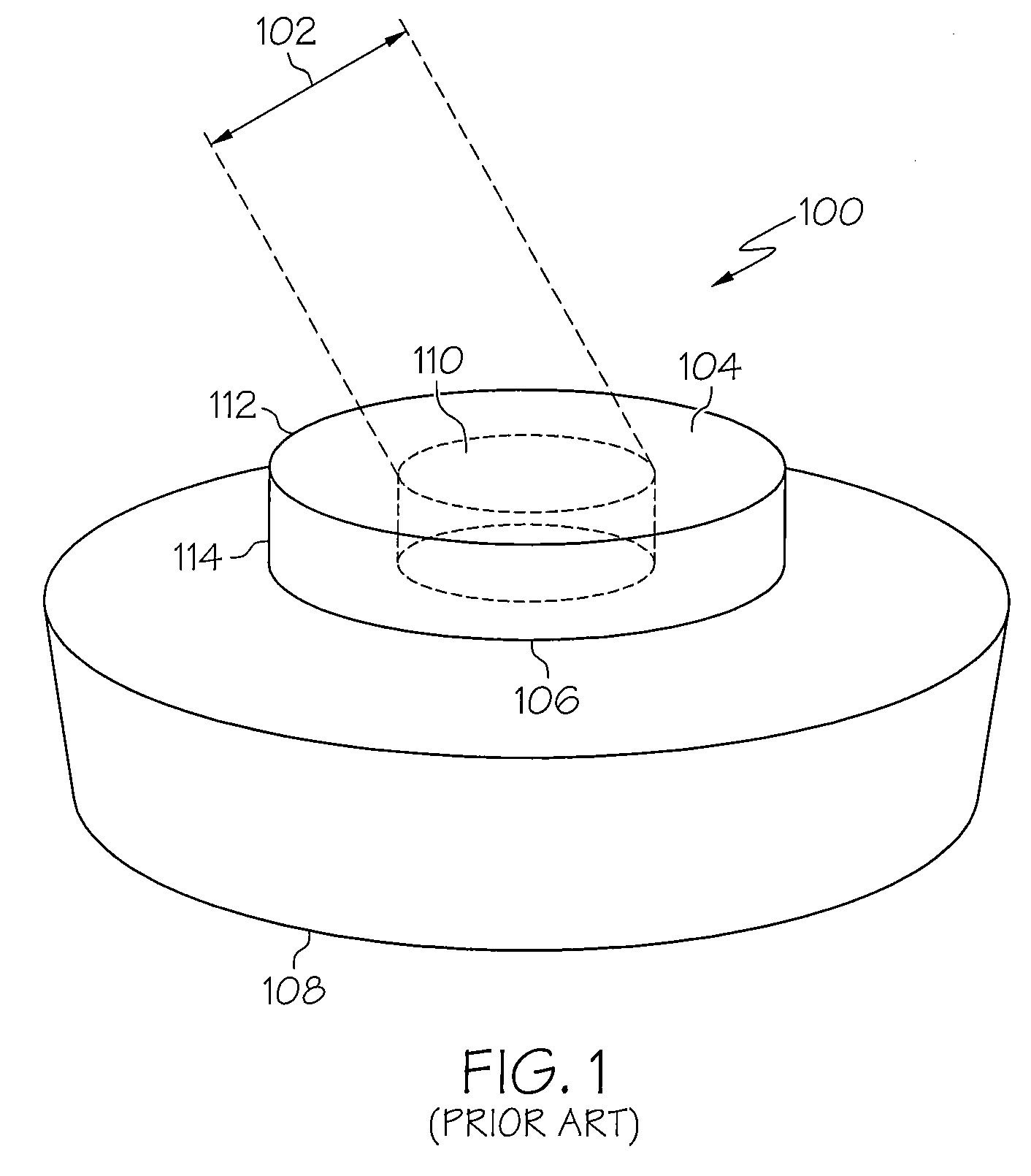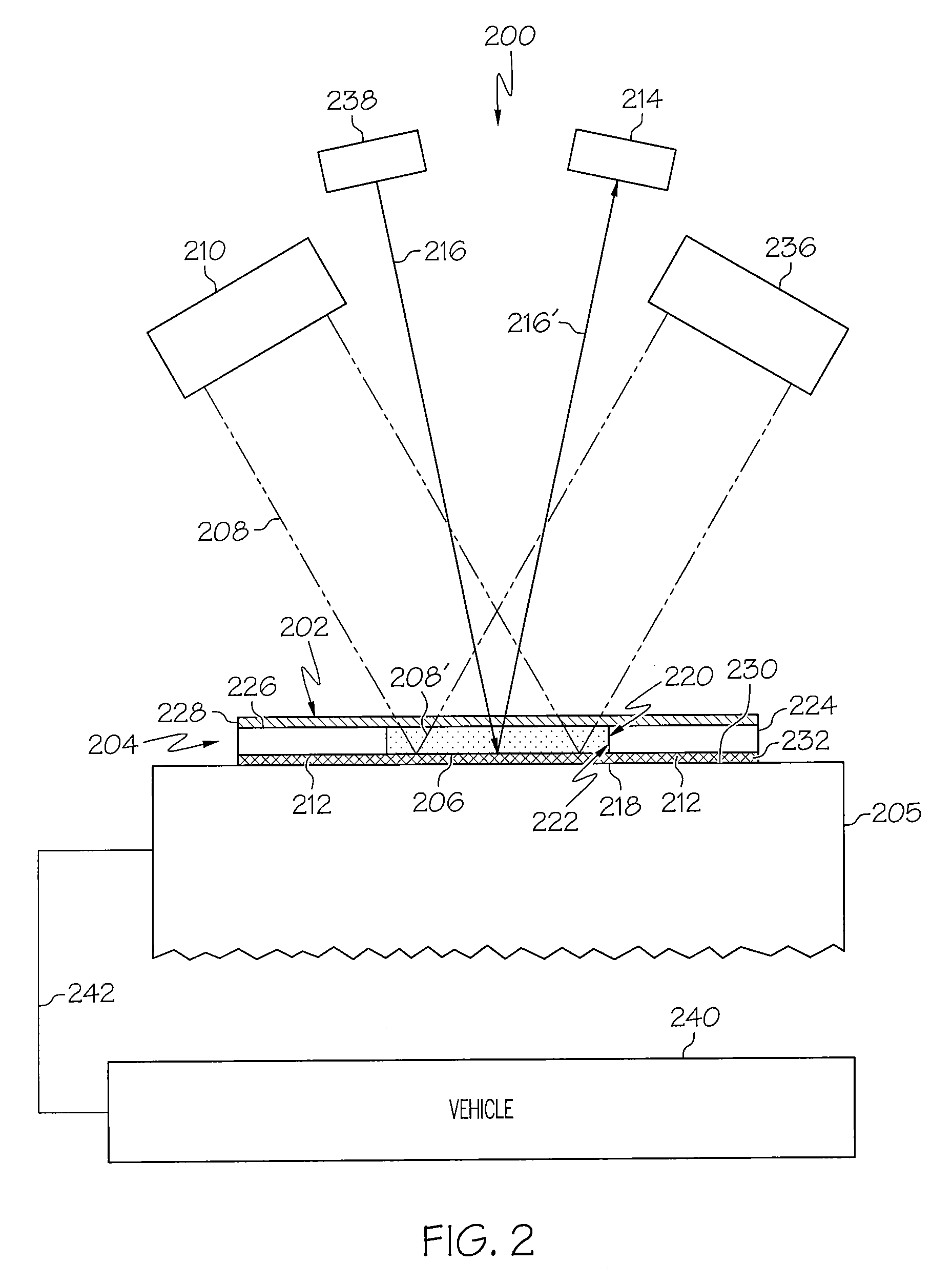Disk laser including an amplified spontaneous emission (ASE) suppression feature
a laser disk and feature technology, applied in the field of lasers, can solve the problems of laser disk failure, large size, and inability to deplete the upper level inversion,
- Summary
- Abstract
- Description
- Claims
- Application Information
AI Technical Summary
Benefits of technology
Problems solved by technology
Method used
Image
Examples
Embodiment Construction
[0014]The following detailed description of embodiments refers to the accompanying drawings, which illustrate specific embodiments of the invention. Other embodiments having different structures and operations do not depart from the scope of the present invention.
[0015]As used herein, laser gain medium (LGM) may refer to an optical material having a host lattice doped with suitable ions, which may be pumped by an external source, such as a laser or other optical radiation to a laser transition. Examples of host lattice material that may be used in conjunction with the present invention may include yttrium aluminum garnet (YAG), gadolinium gallium garnet (GGG), gadolinium scandium gallium garnet (GSGG), lithium yttrium fluoride (YLF), yttrium vanadate, phosphate laser glass, silicate laser glass, sapphire or similar materials. The host material may be in a single crystal form or in a poly-crystalline (ceramic) form. Suitable dopants for such lasing mediums may include titanium (Ti), ...
PUM
| Property | Measurement | Unit |
|---|---|---|
| peak lasing wavelength | aaaaa | aaaaa |
| thickness | aaaaa | aaaaa |
| diameter | aaaaa | aaaaa |
Abstract
Description
Claims
Application Information
 Login to View More
Login to View More - R&D
- Intellectual Property
- Life Sciences
- Materials
- Tech Scout
- Unparalleled Data Quality
- Higher Quality Content
- 60% Fewer Hallucinations
Browse by: Latest US Patents, China's latest patents, Technical Efficacy Thesaurus, Application Domain, Technology Topic, Popular Technical Reports.
© 2025 PatSnap. All rights reserved.Legal|Privacy policy|Modern Slavery Act Transparency Statement|Sitemap|About US| Contact US: help@patsnap.com



